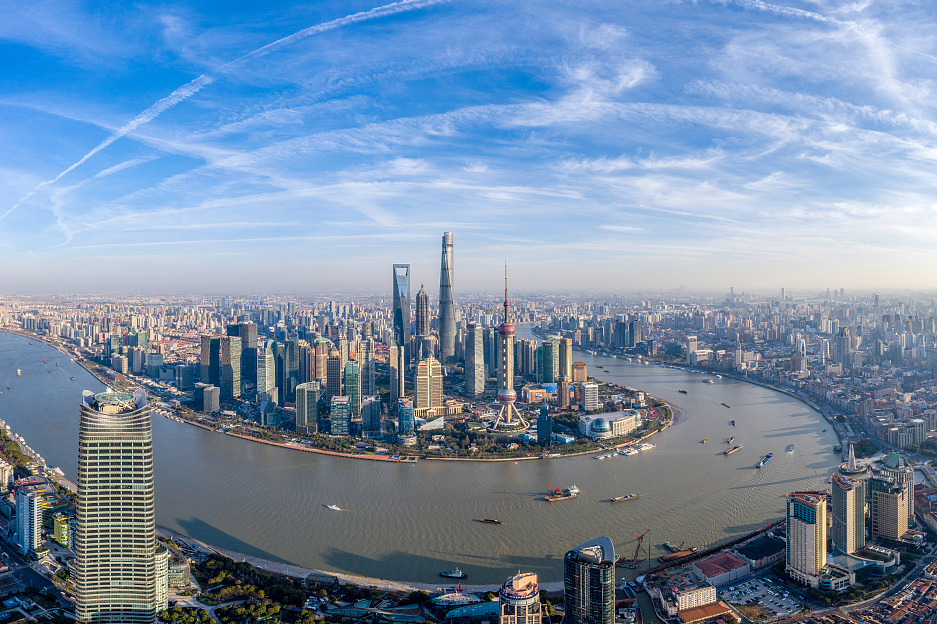A transformative force


The Belt and Road Initiative has proved to be a catalyst that is driving Cambodia's holistic development
The conclusion of the third Belt and Road Forum for International Cooperation in Beijing on Oct 18 was marked by renewed vigor in promoting the Belt and Road Initiative that embodies quality, green and clean principles. President Xi Jinping proposed eight pivotal measures aimed at enhancing the quality and effectiveness of the BRI projects, with a significant emphasis on green development, technological innovation and integrity. These progressive measures have received positive support from participating countries and partners.
Cambodia has been at the forefront as an early adopter of the BRI, recognizing it as a pivotal conduit for fostering international cooperation and creating a plethora of opportunities. The BRI is not merely an instrument for fostering inclusive multilateralism and global governance; it has been instrumental in driving Cambodia's socioeconomic advancements.
Recalling the historic moment in October 2016, when intergovernmental agreements on the BRI were forged during President Xi's visit to Cambodia, Cambodia and China have consistently prioritized and nurtured their bilateral relationships under the BRI. This is evident from the active and strategic participation of Cambodian stakeholders across sectors in various BRI-related forums, illustrating a shared vision and mutual commitment to fostering a globally connected community.
The impact of the BRI on Cambodia's development landscape is notably substantial, with several flagship projects exemplifying the depth of collaboration. Projects such as the Sihanoukville Special Economic Zone, the Phnom Penh-Sihanoukville Expressway, and the Siem Reap Angkor International Airport are a testament to the transformative influence of the BRI in enhancing connectivity, fostering economic activities, and improving the overall quality of life in Cambodia.
The Sihanoukville Special Economic Zone has the capacity to accommodate and enable approximately 300 enterprises. This hub of manufacturing and production can employ 80,000 to 100,000 industrial workers, thereby boosting employment and fostering economic stability. This transformative economic zone serves as a crucible for innovation, industry, and increased productivity, enabling enterprises to flourish within a supportive ecosystem.
Costing around $2 billion and stretching over 187 kilometers, the Phnom Penh-Sihanoukville Expressway stands as a testament to the infrastructural revolution fostered by the BRI. Built by the China Road and Bridge Corporation and supported by various Chinese development banks, this expressway is a vein of connectivity and economic vitality.
The expressway is more than a mere roadway; it is a connectivity enabler by halving trucking time and forging connections among five pivotal provinces, thus facilitating a seamless flow of goods, services and economic possibilities. Its strategic linkage to the Sihanoukville Autonomous Port — Cambodia's beacon of maritime connectivity with comprehensive facilities — amplifies its significance in bolstering the economic dynamism of this second economic pole of the kingdom. The first economic pole is Phnom Penh and its surrounding region and the third economic pole is Siem Reap and its surrounding region.
With a big investment approximating $1.1 billion, the Siem Reap Angkor International Airport is another feather in the cap of the BRI's contributions to Cambodia. The airport started its operation this month and is tailored to accommodate 7 million passengers per year. Equipped with a 3,600-meter-long runway, it is poised to become a nexus of global and regional air travel, handling traffic volumes that will eclipse existing capabilities by a substantial margin. The investment signifies a concerted effort to bolster Cambodia's global standing as a tourist and business destination, enhancing its accessibility and appeal to foreign visitors and investors. It will be a game changer for Siem Reap province.
Through the BRI, economic ties between Cambodia and China have witnessed remarkable growth, marked by increased bilateral investments and flourishing trade relations. The bilateral trade volume hit more than $16 billion last year, up by 17.5 percent year-on-year. From 2018 to 2022, China invested about $13 billion in Cambodia.
China has increasingly been importing a diverse range of agricultural products from Cambodia. Key imports include milled rice, yellow bananas, mangoes, cassava, cashew nuts, corn, longans, and pepper, to name a few. Last year alone, China imported approximately 700,000 tons of Cambodian agricultural products. The activation of the Regional Comprehensive Economic Partnership and the Cambodia-China Free Trade Agreement last January has further bolstered the growth and development of Cambodia's agricultural sector.
The BRI's influence transcends economic realms, fostering enhanced cultural and societal ties between China and Cambodia. Collaborative initiatives ranging from educational scholarships to healthcare assistance, particularly during such global crises as the COVID-19 pandemic, reflect a relationship deeply rooted in mutual understanding and cooperative spirit. China is the first to assist Cambodia in the fight against the COVID-19 pandemic by providing essential medical supplies and sending volunteers.
China-Cambodia cooperation in the preservation and development of Angkor is a symbol of the longtime friendship and close cultural connection between the two countries. China has sent expert teams to help restore ruined temples there since 1997, working on the Chau Say Tevoda temple and the Ta Keo temple successively. Currently, over 2,000 Cambodian students are pursuing their higher education in China and at least 300 of them graduate every year.
The BRI, through multifaceted cooperation and strategic partnerships, has emerged as a transformative force in driving Cambodia's holistic development. By nurturing economic ties, enhancing transparency, and fostering cultural and societal bonds, the BRI illustrates the powerful potential of collaborative international cooperation.
The author is president of the Asian Vision Institute and founder and chairman of the Angkor Social Innovation Park. The author contributed this article to China Watch, a think tank powered by China Daily. The views do not necessarily reflect those of China Daily.
Contact the editor at editor@chinawatch.cn.



































